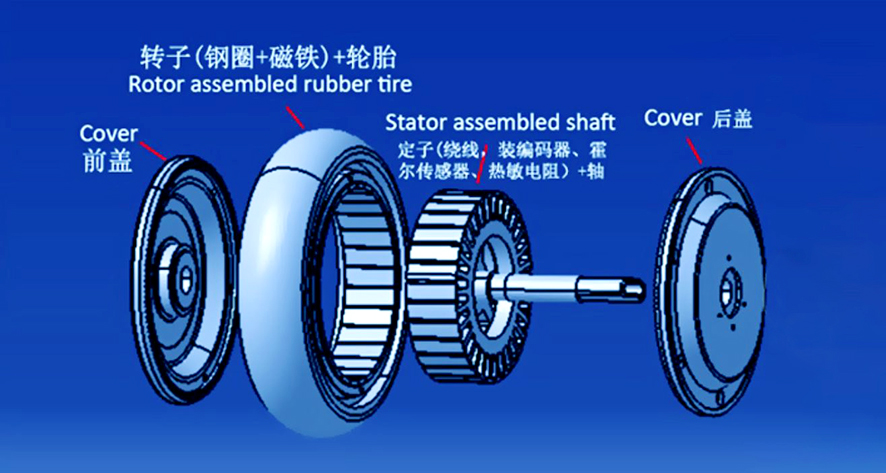Hub motor is a device that integrates the motor, encoder, wheels, and tires into one. It is widely used in various intelligent industries that require mobility, such as service robots, cleaning robots, AGVs, AMRs, fitness equipment, etc. In the field of robotics, servo hub motors enable robots to perform various tasks in indoor environments, such as cleaning, item handling, information transmission, etc., improving the convenience and efficiency of life; In the field of fitness equipment, hub motors are mainly used in aerobic fitness equipment such as treadmills and dynamic bicycles, providing more precise motion control.
In hub motors, encoders are essential components. Encoder is a commonly used sensor that can provide feedback on the state of the hub motor, such as speed and position, in order to achieve closed-loop control. In the output signal of the encoder, the Z signal is an important part, playing a crucial role in the function and application of the encoder.
The Z signal of the encoder is usually used to determine the absolute position of the encoder. In some encoders, the Z signal is a special pulse that is only generated once when the encoder rotates one revolution. The function of the Z signal is to mark the rotation period of the axis, also known as the “Z phase” or “zero position signal”. By detecting the rising or falling edge of the Z signal, we can determine the absolute position of the encoder axis and perform position calibration and zero marking. When the Z signal is detected, the system can recalibrate the position of the encoder to ensure measurement accuracy. The Z signal plays an important role in many automation and control systems, especially in applications that require accurate measurement of position.
In some applications that require precise positioning and motion control, the encoder Z signal is commonly used for zero calibration and position marking. When the device is started, the system can determine the initial position of the axis and perform precise positioning and motion control by detecting the position of the Z signal.
In addition to zero calibration and position marking, the encoder Z signal can also be used to detect the motion status of the device. By monitoring the frequency and pulse number of the Z signal, we can obtain information on the speed and acceleration of the equipment, thereby achieving monitoring and control of the equipment’s operating status.
In practical applications, the encoder Z signal is usually used in conjunction with other signals such as AB signal, UVW signal, etc. to provide more comprehensive position and motion information. The comprehensive application of these signals can meet the needs of different application scenarios for precise position control and motion monitoring.
Shenzhen Zhongling Technology Co., Ltd, as a long-term R&D enterprise focused on products, has recently launched the latest Z-signal encoder hub motor, bringing customers more comprehensive and high-quality products and solutions, and promoting industry progress.
Post time: Apr-03-2024



